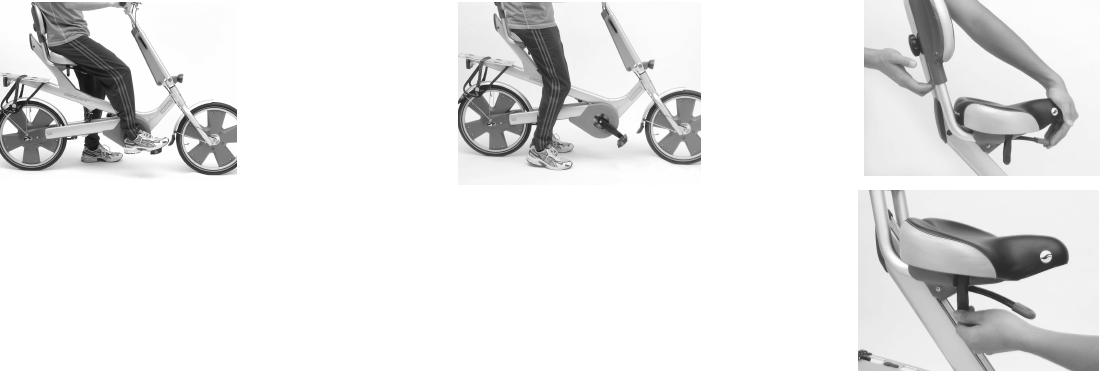
Getting the Right Fit
Seating Adjustment
Saddle Height
For maximum pedalling efficiency and power transfer, the saddle should be raised to a height that creates a bend in your knees of approximately
30 degrees when the pedal is farthest away from you (right pedal at 4 o’clock, left pedal at 8 o’clock). (FIG. 2)
To Adjust Saddle Height:
Use both hands to move the saddle up or down. Place one hand under the front of the saddle and locate the Height Adjustment Lever. Place
your other hand under the bottom of the Lumbar Support.
Lift upward on the Adjustment Lever with your fingers and slide the saddle up or down. Once the lever is released the saddle will automatically
lock into position.(FIG. 4)
To Check for Correct Saddle Height:
- Sit on the saddle- While seated, place both feet on the ground. The balls of your feet should touch comfortably. If your feet rest flat on the
ground, you might want to raise the saddle about an inch. If just the tips of your toes are touching, you should lower the saddle by about two
inches.
Saddle Fore/Aft Position
The saddle’s fore/aft adjustment is used to accommodate riders of different sizes and shapes. A bigger rider
would slide the saddle forward (away from the Lumbar Support), while a smaller rider would slide the saddle
rearward (toward the Lumbar Support).
The for/aft quick-release adjustment lever is located under the saddle on the right side.(FIG. 5) Pull the lever
into the open position and slide the saddle forward or rearward. Sit on the saddle and find a position that
allows you to sit comfortably without having to lean too far rearward to rest against the Lumbar Support.
FIG. 3
FIG. 4
FIG 2
FIG. 5
FIG. 2: Knee should be
bent at approximately
30 degrees when
extended.
FIG. 3: Balls of feet
should be touching the
ground while seated.
5


















